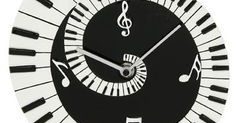Happy 50th birthday to Alison Krauss!
Today’s feature could have been about any number of incredible offerings from this engaging country and bluegrass artist, but I eventually narrowed it down to ‘When You Say Nothing at All’ because of some interesting connections. Here is the story.
Some of you may recall the Ted Tocks feature focusing on ‘The Gambler’ by Kenny Rogers. As much as that version of Ted Tocks Covers profiled the legendary artist, it was also about a very humble songwriter named Don Schlitz. Well, we have Don Schlitz to thank for this crossover hit as well. This sentimental love song was written by Schlitz and his regular collaborator Paul Overstreet. The words came to the pair as they were about to pack it in after an unproductive day of writing. Literally nothing was coming their way in terms of ideas. They had pretty much determined that they had nothing to say and in Don Schlitz’s words it was then that the words came pouring out.
As we tried to find another way to say nothing, we came up with the song”
Don Schlitz
Overstreet and Schlitz had many avenues to get their songs across to a receptive buying public, but in the late ‘80s one of these conduits was Keith Whitley. When this rising star heard ‘When You Say Nothing at All’ he wanted to record it immediately for his album ‘Don’t Close Your Eyes’. It was released as a single in August of 1988 as a follow up to the album’s title track. By the end of the year, the song had made it to #1 on the Billboard Hot Country Singles chart. ‘When You Say Nothing at All’ was the second of five top selling singles for Keith Whitley. Sadly, he only enjoyed the benefits of one more, because the final two registered posthumously. Whitley died of alcohol poisoning on May 9, 1989, at the age of 34. This sudden death was a tragic loss for the country music community, and it left Overstreet and Schlitz stunned. They often marveled at Whitley’s ability to deliver their words.
Keith did a great job singin’ that song. He truly sang it from the heart.”
Don Schlitz
Here is the Keith Whitley version of ‘When You Say Nothing at All’.
A few years later Alison Krauss and Union Station were approached by producer Randy Scruggs to participate on a Keth Whitley tribute album. After Krauss and her band completed their recording, everyone knew it was something special, but it was not the album’s primary focus. When the tribute was released to country radio stations, program directors gravitated to the Krauss track and by early 1995, BNA Records opted to release the Alison Krauss and Union Station version as a single. Krauss also featured it on a compilation of her early career recordings called ‘Now That I’ve Found You: A Collection’ where it peaked at #3 on the Billboard Hot Country Singles & Tracks chart and #2 on the Billboard Sales chart. The success of the cover caught Krauss by surprise.
It’s a freak thing. It’s kind of ticklin’ us all. We haven’t had anything chart before. At all. Isn’t it funny though? We don’t know what’s goin’ on…The office said ‘Hey, it’s charting’, and we’re like, ‘Huh’?”.
Alison Krauss
To add to the power of the release a Milwaukee radio station production director named Mike Cronwell created a duet version of Keith Whitley and Alison Krauss, similar to ‘You Don’t Bring Me Flowers’ a decade previous. This presentation added to the song’s popularity.
Alison Krauss and Union Station went on to win the 1995 CMA award for Single of the Year.
Just before the end of the decade, Irish singer-songwriter Ronan Keating released ‘When You Say Nothing at All’ as a debut single. For his album ‘Ronan’. It was also famously featured in the popular movie ‘Notting Hill’. Here is the Keating version that went to #1 in Ireland, the U.K. and New Zealand.
For good measure, enjoy the famous scene from ‘Notting Hill’. This features Hugh Grant and Julia Roberts as an unlikely couple who fall for each other despite their different lots in life.
The way I see it, saying nothing at all is always better than saying “Whoopsie daisies”. Priceless!
As an added bonus, here is songwriter Don Schlitz playing the song in an honest acoustic form.
For Alison Krauss, ‘When You Say Nothing at All’ was the catalyst to a remarkable career that is still in full swing. Admittedly, she first caught my eye through her association with Robert Plant, but check this out. She has won 27 Grammy Awards which leaves her fourth all time in that regard, just behind Beyonce, Quincy Jones and Georg Solti. She is the second most decorated female artist in the Grammy realm behind only Beyonce. In November of 2019 Alison Krauss received the National Medal of Arts. This presentation was the first since 2017 and the White House occupant of the day managed to misspell Krauss’s name in the official press release.
Sometimes it is better to say nothing at all.
